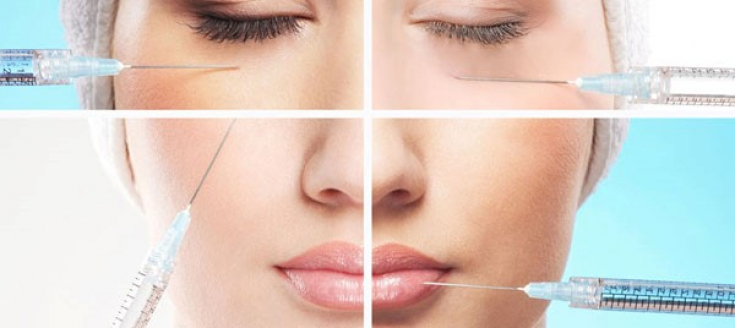are the second most popular non-surgical procedure. Ease of insertion and good results of procedures – the main advantages of such drugs. Despite the relatively high level of safety of HA gels, rare cases of adverse events do occur and their number is increasing. Among them –
allergic reactions to HA fillers. Dr. Tahera Bhojani-Lynch believes that patients must be informed of the likelihood of developing this complication, even months after the drug is administered. The estet-portal.com article presents a doctor's view of this problem.
- Types of allergic reactions to fillers: classification by time of occurrence
- Causes of allergic reactions to hyaluronic acid fillers
- Diagnosis and treatment of late inflammatory response to filler
Types of Allergic Reactions to Fillers: Classified by Time of Occurrence
Hypersensitivity reactions , depending on the time of occurrence, are classified into immediate and delayed. Type 1 allergic reactions develop within minutes to hours after filler injection and are caused by an IgE-mediated immune system response to the drug. They can appear, for example, in the form of Quincke's edema or anaphylaxis
Required Reading: Algorithm for Anaphylaxis Emergency Care
delayed-type hypersensitivity reactions. Mediated by the interaction of the antigen mainly with T-lymphocytes, they develop 48-72 hours and later after the injection of the filler and can persist for several months. Late-onset allergic reactions occur at least 3 months after uncomplicated dermal fillet injection
ra.Causes of allergic reactions to hyaluronic acid fillers The etiology of delayed hypersensitivity in response to hyaluronic acid fillers is not fully understood. Among the influencing factors are:
Previous injections and injuries; injection technique (product volume, repeated procedures, intramuscular injection);
Late inflammatory reactions
– rare complications that can develop after injections of HA-based filler gels and be immune-mediated or have an infectious origin.
- If an infection is the trigger for an inflammatory reaction, symptoms are usually limited to a well-defined area. In this case, steroid drugs are not prescribed.
A late hypersensitivity reaction cannot be predicted and may develop after the first filler injection or after repeated injections. While adverse events
may occur after the administration of any HA filler, the frequency of their occurrence varies depending on the product administered:
According to preclinical studies, an important influencing factor is  the degree of modification of the hyaluronic acid molecule
the degree of modification of the hyaluronic acid molecule
as a result of cross-linking and
bio-fermentation processes, more thanhigh concentration
HA and gel particle characteristics can also affect frequency inflammatory processes after drug administration.
- Because filler technologies are confidential, it is not possible to pinpoint product-related factors that affect complication ratesbut.
- Diagnosis and treatment of late inflammatory response to HA fillers Because the symptoms of a late allergic reaction appear after a certain period of time after the injection of the filler, this makes it difficult to diagnose and treat the complication. Allergic reactions IV type
steroids are needed to relieve signs of inflammation. If nodules are present, hyaluronidase injections
.can be used to remove the allergen
Read also:
Use of hyaluronidase for excess hyaluronic acid, fibrosis and granuloma Inflamed areas cannot be massaged – this kind of manipulation can lead to an increase in symptoms. Late inflammatory response is observed at least 2 months after the injection of hyaluronic acid and manifests itself as a diffuse, indurated, non-fluctuating erythematous inflammation of all zones into which the dermal filler is injected. Otherwise, patients are somatically healthy
.These reactions can occur with any HA-based dermal filler, but their frequency varies depending on production technology. Successful treatment of an allergic reaction to a filler within a few days is possible if the complication is diagnosed and treated correctly.
In the absence of nodules, improvement may occur over time and without medical intervention, however, in most cases,oral steroids
are prescribed for a quick and stable result, and to reduce the risk of recurrence.Follow us on Facebook
!
Removal of resistant nodules may additionally require the introduction ofhyaluronidase.
Please be reminded that prior to any correction with HA fillers, patients must be warned of all possible, including rare, side effects, complications, and their symptoms.
Based on Plastic and Reconstructive Surgery.Subscribe to our channel YouTube!







Add a comment